Planning a Hakone day trip from Tokyo? You’ve made a great choice! Hakone is a top pick for a day trip due to its proximity to Tokyo, and for its endless list of things to do. Hakone has a wealth of hot springs, stunning landscapes, and arguably some of the best views of the iconic Mount Fuji. It’s no wonder that this scenic town is a top choice for a quick getaway from the capital.
In this article, I’ll take you through a step-by-step Hakone day trip itinerary to help you maximize your time here. I will share how to get to Hakone and present you the fastest, most popular and the cheapest route, so you can pick the best for your needs. I will explain how the Hakone Free Pass works and give you details on costs and savings.
Enjoy the ride, and don’t forget to bring your camera — you’ll want to capture every moment of your Hakone day trip adventure!
Table of Contents
- Planning your day trip to Hakone
- How to get to Hakone from Tokyo
- Via Romancecar
- Via Odakyu Line (included in your Hakone Pass)
- Shinkansen
- Is the Hakone Pass worth it for one day?
- Hakone Day Trip itinerary
- Take the train from Tokyo to Hakone
- Visit the Hakone Shrine and the Peace Shrine Gate
- Walk the Old Tokaido Highway Cedar Avenue
- Take a Pirate Ship Cruise on Lake Ashi
- Ride the Hakone Ropeway
- See the Owakudani Valley
- Lunch at Tamura Ginkatsu-tei
- Visit the Open Air Museum
- Relax in an onsen at Hakone Kowakien Yunessun
- Take the train back to Tokyo
- Where to stay in Hakone
- Tips for first time visitors
- Useful resources for first timers
- Frequently Asked Questions
Planning your day trip to Hakone
For an optimized itinerary on your day trip to Hakone, I highly suggest leaving Tokyo as early as possible. Ideally, aim to arrive at Hakone-Yumoto before 10am so that you have ample time to explore all the top attractions in Hakone.
To make your travel more convenient, I recommend purchasing and utilizing the Hakone Free Pass. This pass covers a round trip between Shinjuku and Hakone-Yumoto, as well as transportation within Hakone and admission to certain attractions.
Keep in mind that this itinerary is designed for a day trip to Hakone from Tokyo. While I will include options for enjoying an onsen, if you desire a more relaxing experience, I recommend staying overnight in Hakone. Many ryokans in Hakone offer onsen facilities on-site, and their prices often include breakfast and dinner.
Hakone is an extremely popular day trip destination from Tokyo, particularly during the sakura season and koyo festival. If you happen to visit Japan during these times, be sure to schedule your day trip to Hakone on a weekday to avoid excessive crowds.
Based on my previous visit to Japan, I typically walked around 20-30 kilometres per day! Considering this, I suggest wearing comfortable shoes for this trip, as the itinerary involves quite a bit of walking.
Here is the interactive itinerary map.
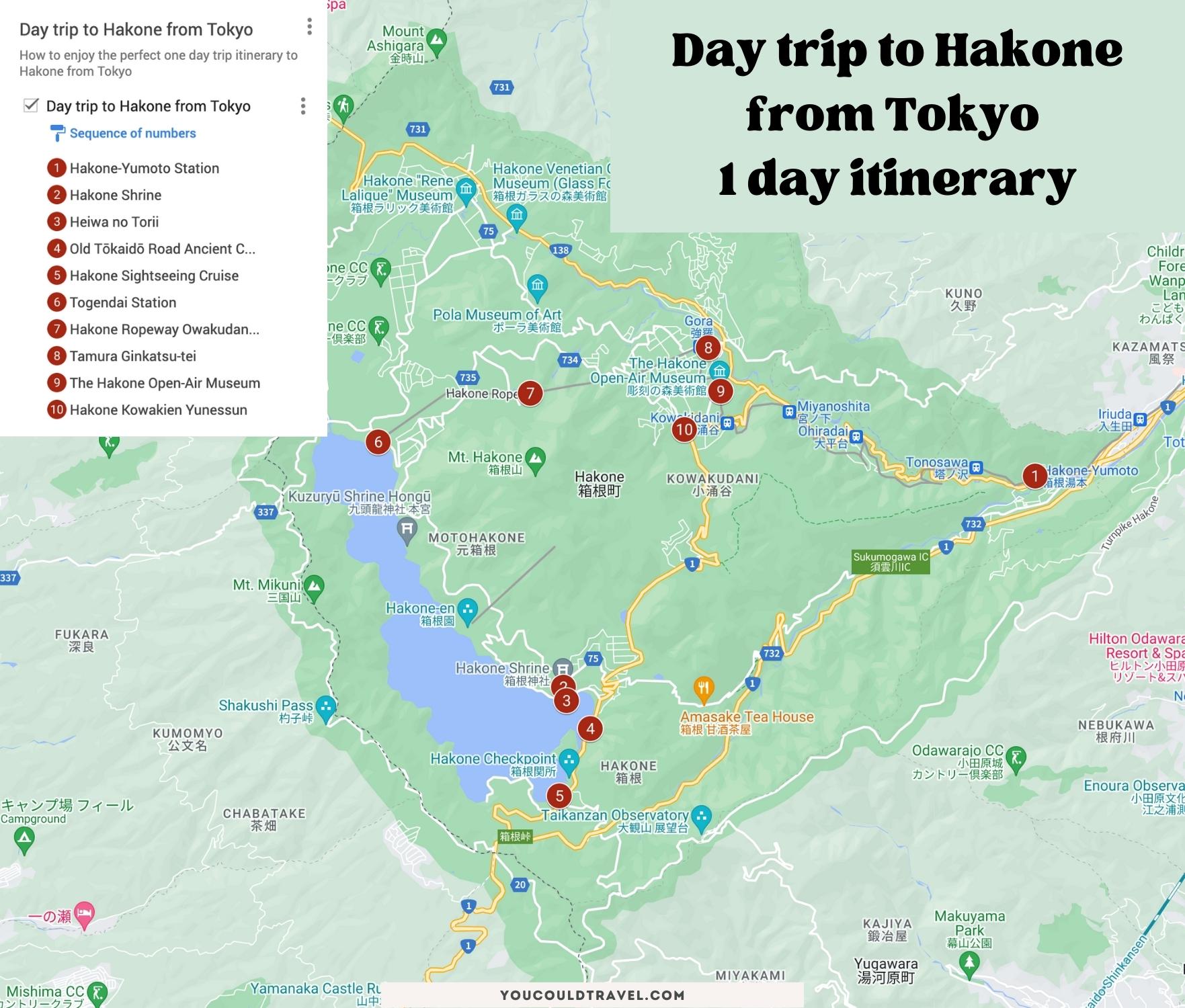
How to get to Hakone from Tokyo
Via Romancecar
Most people use the Odakyu Limited Express “Romancecar” to get from Tokyo to Hakone. This is an all reserved-seat train that has very few stops along the way. It takes less than one hour and a half to get to Hakone Yumoto Station. This is my recommended option for a day trip to Hakone from Tokyo, in the interest of saving time!
While the price of this ticket is not included in your Hakone Free Pass, for just an extra 1090 yen, you can use the Romancecar alongside your Hakone Pass. When exchanging your online voucher for the actual Hakone Free Pass, just ask the staff for extra tickets to the Romancecar. Even with this extra cost, the Hakone Pass is very much worth it!
- ⏱ Duration: 70-75 minutes.
- 🚄 Japan Rail Pass: Does not cover this journey.
- ⛩️ Hakone Free Pass: Does not cover this journey.
- 💴 Approximate cost: 2500 yen, one way or just 1090 yen with your Hakone Pass
Via Odakyu Line (included in your Hakone Pass)
Best option for Hakone Pass Holders
The most cost-effective method of reaching Hakone from Tokyo is by taking the train on the Odakyu Line. Begin your journey at Shinjuku Station in Tokyo and board the Odakyu Line, heading towards Odawara Station. Upon arriving at Odawara Station, transfer to the Hakone Tozan Train that will take you to Hakone Yumoto Station. The entire trip typically takes around 1 hour and 30 minutes-2 hours.
I recommend this option for those who wish to extend their Hakone day trip itinerary and stay the night, as you won’t be in as much of a rush.
To make your travel experience more convenient and economical, I recommend utilizing the Hakone Free Pass. This pass covers the entire journey mentioned above.
- ⏱ Duration: 90 minutes.
- 🚄 Japan Rail Pass: Does not cover this journey.
- ⛩️ Hakone Free Pass: Covers the full return journey.
- 💴 Approximate cost: 910 yen, one way or Free with Hakone Free Pass.
Shinkansen
Best option for JR Pass holders.
The fastest way to get from Tokyo to Hakone is to take the Tokaido Shinkansen from Tokyo Station or Shinagawa Station to Odawara Station. From Odawara Station, transfer to the Hakone Tozan Line, which will take you to Hakone-Yumoto Station in about 15 minutes.
This is ideal if you already have a JR Pass and a great option as you will get to save a lot of time.
- ⏱ Duration: 55 minutes.
- 🚄 Japan Rail Pass: Covers the Shinkansen between Tokyo and Odawara Station.
- ⛩️ Hakone Free Pass: Only covers the train between Odawara and Hakone – Yumoto Station.
- 💴 Approximate cost: 3800 yen, one way.
Is the Hakone Pass worth it for one day?
Yes, the Hakone Pass is definitely worth it, even if plan to visit Hakone on a day trip. The Hakone Free Pass offers a round trip from Shinjuku to Odawara Station, as well as unlimited rides on public transportation in the Hakone region, including buses, boats, funiculars, and trains. The pass also grants you small discounts at various museums and attractions in the area.
The Hakone Pass is also incredibly convenient as you won’t have to pay and queue for tickets every time you need to ride a bus, train, or funicular. The Hakone Pass also included a scenic boat ride on Lake Ashi.
To make the most of your day trip to Hakone, I recommend purchasing your Hakone Free Pass online. Once purchased, you can collect it from the Odakyu Sightseeing Center.
Hakone Day Trip itinerary
This is how I recommend spending your day trip to Hakone. You are welcome to follow this itinerary entirely, or add/remove points of interest to suit your style of travel. In order for this itinerary to work, I do recommend that you leave Tokyo as early as possible.
This means that ideally, you will purchase a Bento Box for your breakfast to enjoy en-route to Hakone.

Take the train from Tokyo to Hakone
If you are a morning person, then you can take the Romancecar to Hakone-Yumoto Station via Odawara from as early as 7am, arriving at 8:39am. Alternatively, there is also a 7:37am Romancecar arriving at 9:22am.
By arriving this early to Hakone, you will have more time to explore the town, and see more attractions.
Visit the Hakone Shrine and the Peace Shrine Gate
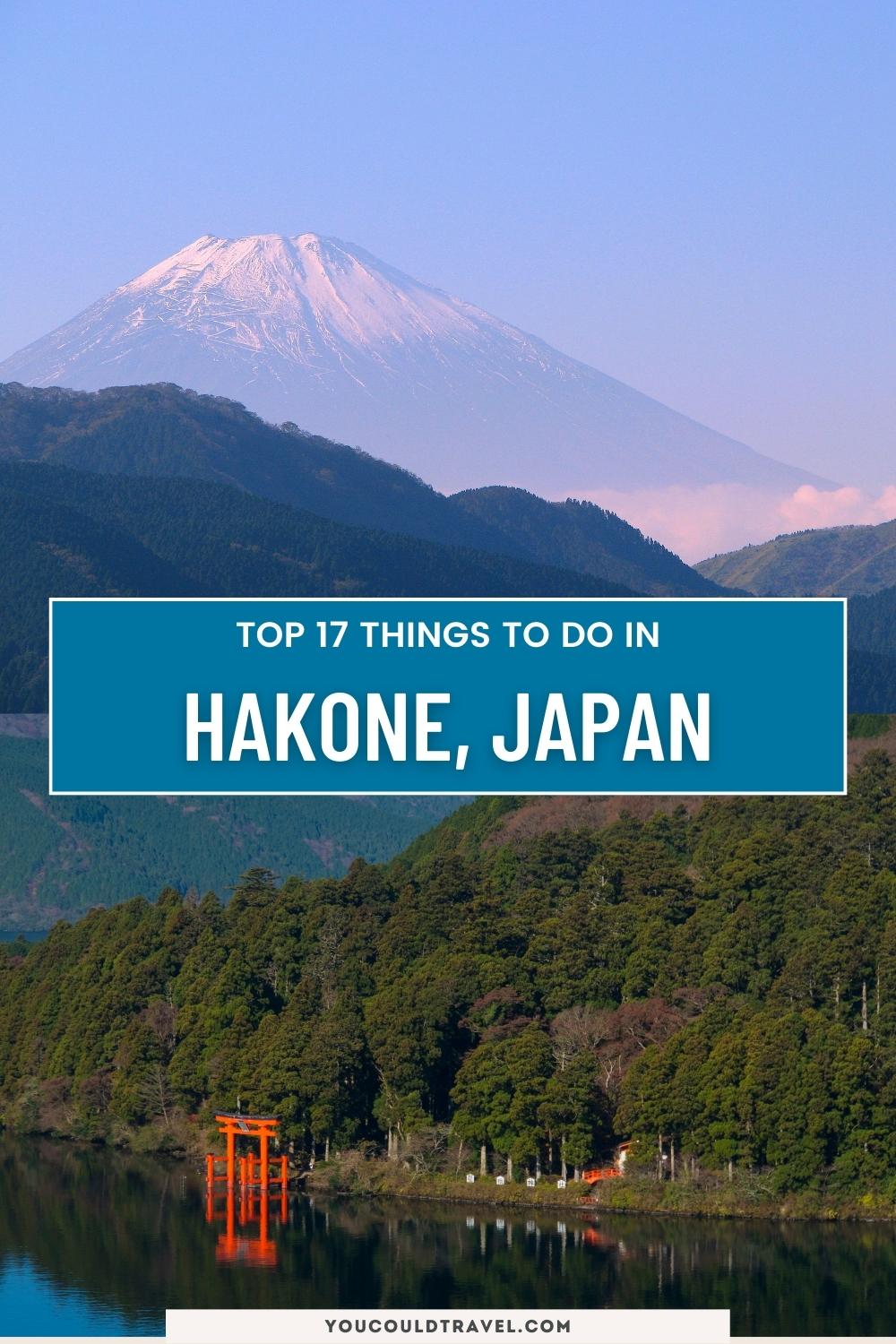
The Hakone Shrine (also known as Hakone Jinja) is one of the most popular attractions in Hakone, and one of the most famous landmarks in Japan. The huge vermilion torii frames the calm Lake Ashi and looks especially stunning on an atmospheric, rainy day. This is one of the most iconic shinto gates in Japan, alongside Miyajima Shrine and Fushimi Inari Taisha.
The shrine hosts an annual festival called Hakone Jinja Reitaisai, held on the first Sunday of June. The festival includes a grand procession of portable shrines, traditional music, and performances.
To access the shrine, leave the Hakone Yumoto station through the main exit and walk to the Hakone Yumoto Bus Terminal. Take the Bus to Moto-Hakone or Hakonemachi. The journey takes around 40 minutes and is a scenic drive. From the bus stop, walk for about 10-15 minutes to reach the shrine. Explore the beautiful shrine, then make your way to the famous Torii gate that’s by Lake Ashi.
Walk the Old Tokaido Highway Cedar Avenue
The Old Tokaido Highway Cedar Avenue, served as an important route during the Edo Period connecting Edo (now Tokyo) to Kyoto. The avenue gets its name from the ancient cedar trees that line both sides of the road, forming a stunning green canopy.
The Cedar Avenue holds cultural and historical significance. It has been immortalized in numerous artworks, woodblock prints, and literary works.
The Cedar Avenue is located just a short walking distance from the Hakone Shrine. Pass the Moto-Hakone Port and continue through the large red gate towards the avenue.
Take a Pirate Ship Cruise on Lake Ashi
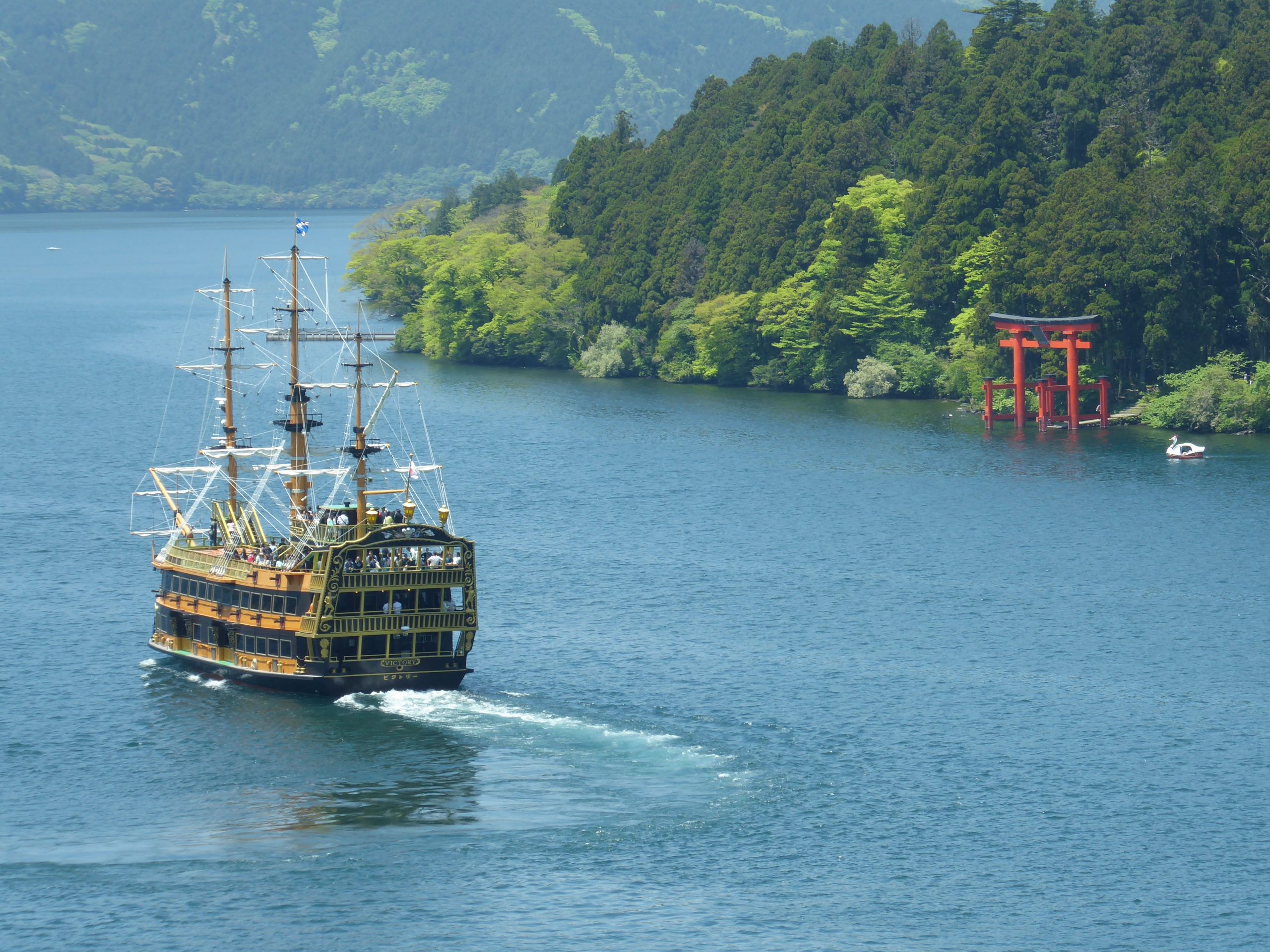
Lake Ashinoko formed over 3,000 years ago from a volcano and is in Hakone, Japan. It’s a beautiful and well-known lake that attracts many visitors. One of its main attractions is the stunning view of Mount Fuji and the large torii at the Hakone Shrine.
To really appreciate the beauty of Hakone, I recommend taking a sightseeing boat ride on the lake. It gives a different perspective of the town and offers amazing views of Mount Fuji, should you visit on a clear day.
To embark on this memorable excursion, simply board the charming boat at Hakone-machi-ko/Moto-Hakone-ko and disembark at Togendai-ko. The boat looks like a pirate ship and has 3D art and pirate references.
It’s worth noting that the boat ride is conveniently included in the Hakone Free Pass.
Ride the Hakone Ropeway
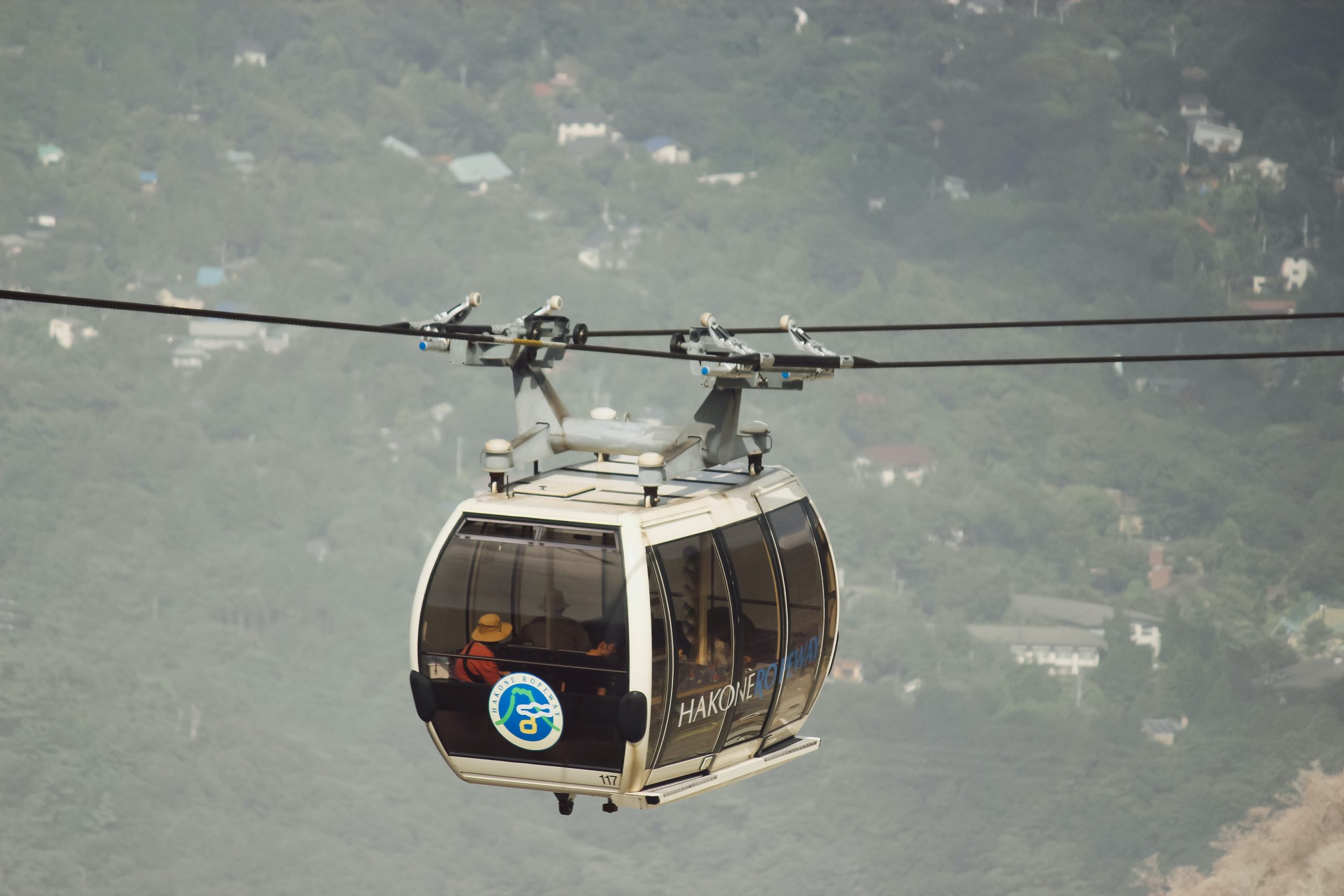
Next, it’s time to take the Hakone Ropeway, also known as the gondola from Tōgendai to Sōunzan via Ōwakudani. From Tōgendai port, it takes just a few minutes walk to the Hakone Ropeway station. It takes 17 minutes to make it to Ōwakudani station.
Cars leave every few minutes, you won’t have to wait very long to get on the gondola, so don’t worry. The Hakone Ropeway is a popular attraction in the area because it provides stunning panoramic views of the surrounding scenery. On clear days, you can see breathtaking sights such as Lake Ashinoko, the lush forests of Hakone, and the iconic Mount Fuji.
Just a quick note, the Hakone Ropeway ride is included in your Halone Free Pass so you don’t need to purchase a separate ticket for this.
See the Owakudani Valley
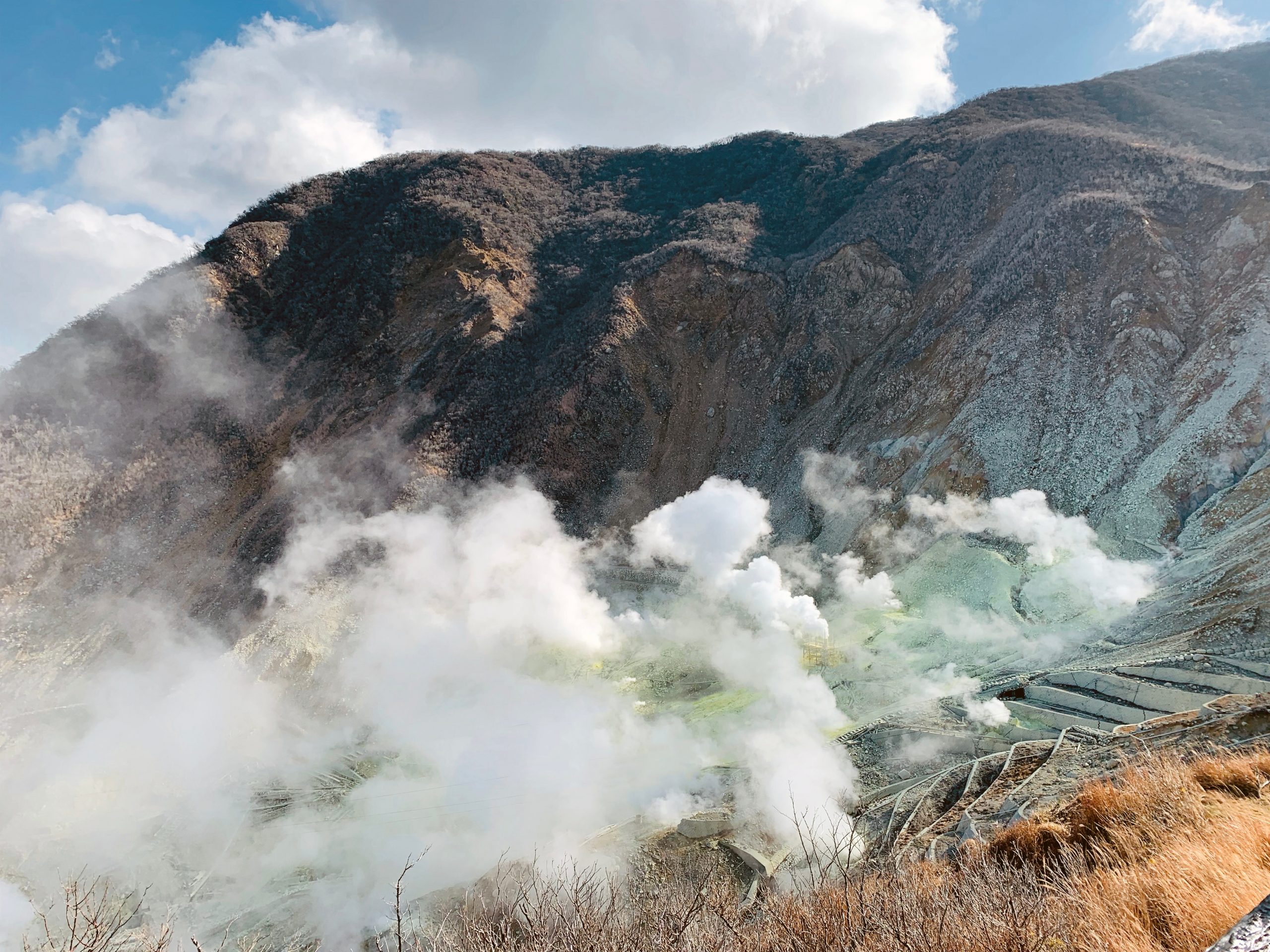
Owakudani also known as the “Great Boiling Valley” is a volcanic valley and one of the top attractions in Hakone. This valley is a result of volcanic activity that occurred thousands of years ago.
There is a 30-minute walking trail around the valley where you can get close to the sulphur and see the vents. To access the trail, you need to make a reservation in advance on the official Hakone website, and it costs 500 yen per person.
It’s important to note that the area may be closed if there is increased volcanic activity.
The most popular activity in Owakudani Valley is eating the local black eggs known as Kuro Tamago. These eggs are boiled in the hot sulphur springs, which turns their shells black. Inside, the eggs taste delicious. According to local legend, eating one of these eggs can add seven years to your life. For the best experience, enjoy the eggs with a bit of salt.
Lunch at Tamura Ginkatsu-tei
Take the Hakone Ropeway from Owakudani to Sōunzan Station. From Sounzan Station, take the Hakonetozan Cable Car to Koen-Shimo Station and walk for about 5 minutes.
Tamura Ginkatsu-tei is a tonkatsu restaurant that specialises in both vegetarian and meat sets. The Gora speciality is the Shakuri tofu, which is Japanese minced pork sandwiched between tofu, deep-fried, then simmered in an earthenware pot.
Tamura Ginkatsu-tei Opening Hours:
- Thursday – Monday 11 am–2:30 pm; 5–7 pm
- Tuesday 11 am–2:30 pm
- Wednesday Closed
Visit the Open Air Museum
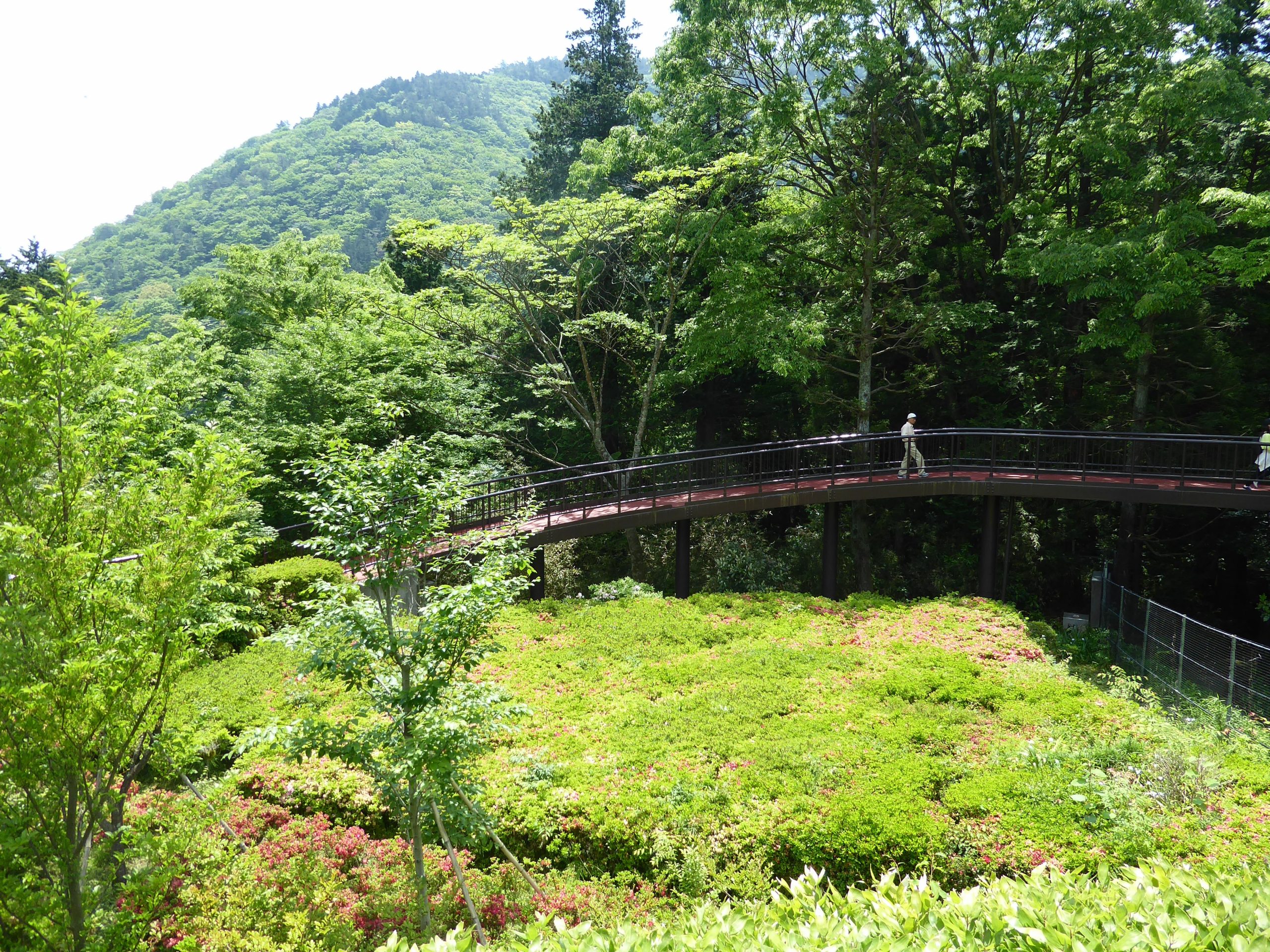
Next, make your way to the Open Air Museum, the first museum of its kind in Japan and one of the most popular museums in the country.
From the restaurant, the Open Air Museum is just a 15 minute walk or a 6 minute bus ride. I recommend visiting the Hakone Open Air Museum to admire over 1,000 sculptures and artworks. As you explore the park, you’ll come across more than 120 outdoor sculptures and five indoor exhibitions, including the famous Picasso-themed hall.
The museum also offers interactive displays for families with kids, providing entertainment for everyone. When you need a break, indulge in the luxurious hot spring foot baths available on-site. The Hakone Open Air Museum holds the distinction of being the first museum of its kind in Japan.
The museum is open from 9:00 to 17:00, with the last entry at 16:30. The admission fee is 1600 yen, or 1400 yen if you have the Hakone Free Pass.
Relax in an onsen at Hakone Kowakien Yunessun
Even if it’s just a day trip to Hakone, you cannot miss soaking in a hot spring. After all, Hakone is well-known for its onsen and Japan is renowned for its stunning hot springs, surrounded by nature and gorgeous landscapes.
In Hakone, there’s a special place called Yunessun Spa Resort where you can bathe in unique themed pools and baths. They have a wine bath, a coffee bath, and even a water slide. It’s like a combination of a Japanese hot spring (onsen) and a water park. The resort has 23 different hot spring baths, including traditional Japanese onsen.
What sets this resort apart is that you can wear a swimming suit while bathing, which is great for couples and families. Usually, in traditional onsen, men and women have separate areas and young kids are not allowed.
If you prefer a more traditional experience, there is an area called Mori no Yu similar to a regular onsen.
To reach the Hakone Kowakien Yunessun, just walk for 15 minutes from the Open Air Museum.
- 💴 Admission fee: 3500 yen for all areas (Buy your tickets to the Yunessun Spa Park in advance)
Take the train back to Tokyo
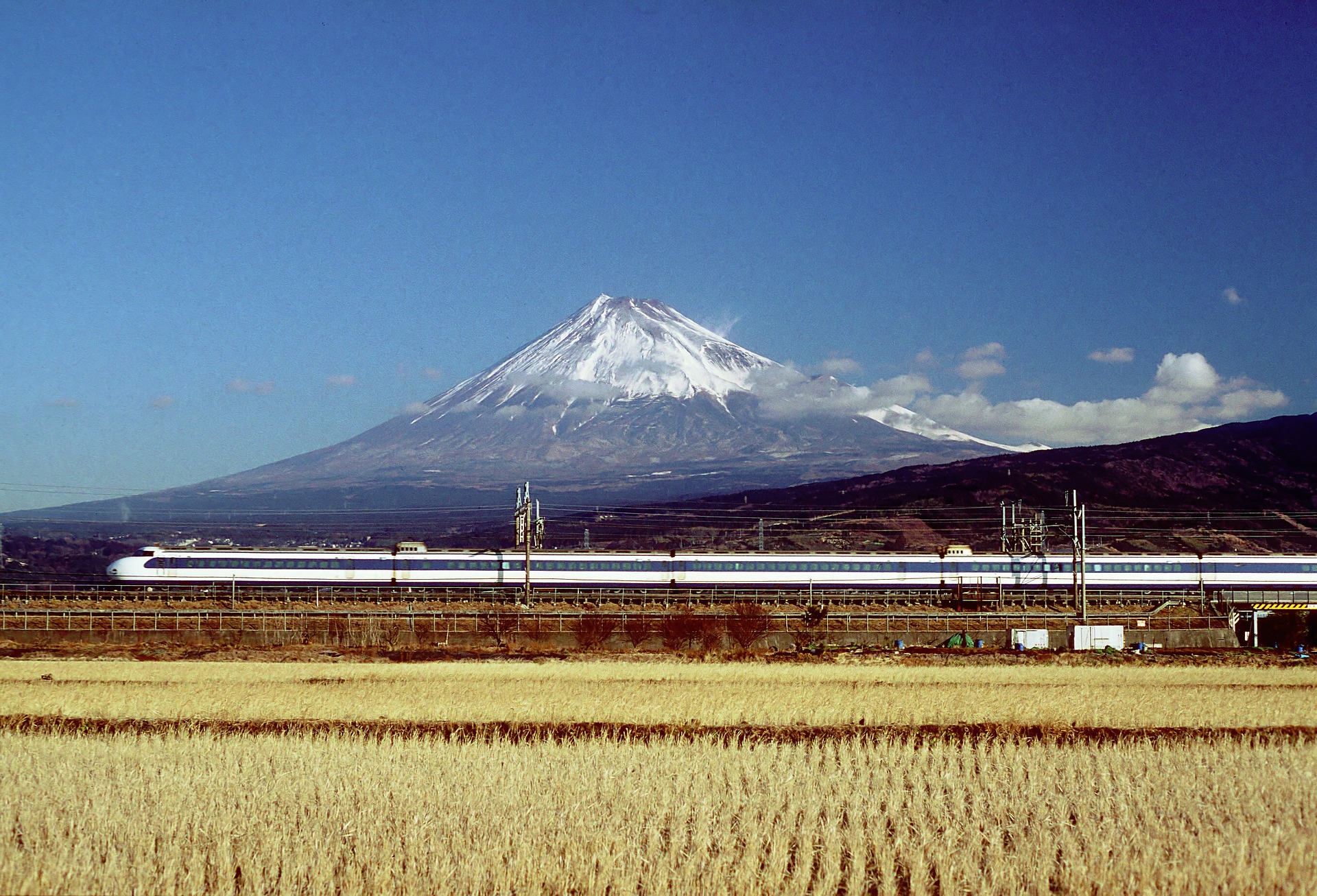
It’s time to make your way back to the Hakone-Yumoto Station to catch a train back to Tokyo. It’s definitely been an adventure, and you got to see so many new and exciting places in Hakone. Since you will be arriving back in Shinjuku, there are plenty of late night things to do in Shinjuku and late dinner options where you can get an evening meal, before going back to your hotel.
Where to stay in Hakone
You’ve decided that you want to extend your day trip to Hakone. That’s understandable. After all, Hakone really is so beautiful! To maximise your time in Hakone, I recommend staying in Gora. You are right in the heart of Hakone, have access to plenty of hot springs and excellent hotels known for their Japanese hospitality. You’re also close to public transport to access all the rest of the main attractions in Hakone.
For a complete breakdown on all the important areas in Hakone and reviews of my favourite hotels, read my where to stay in Hakone article. I discuss different areas and why they are most suitable for your type of travel style and budget. I also recommend my favourite hotels in Hakone organised by budget.
- 💎 Best luxury 5* hotel: Kinnotake Tonosawa
- 🏨 Best mid-range hotel: Hakone Villa Bizan
- 🛏 Best budget hotel: Emblem Flow Hakone
For more hotels and reviews, I recommend using booking for accommodation in Hakone.
The joy of staying in Hakone is enjoying a fantastic traditional ryokan with dinner and breakfast. You will usually dress in a yukata and have access to indoor and outoor hot bath springs which look out of this world. Here are some of the ryokans I recommend:
- Laforet Club Hakone – Anticipate breathtaking natural hot spring baths, accommodations featuring tatami areas, and complimentary breakfast and dinner as part of the package. This highly sought-after hotel is conveniently located a mere 5-minute stroll from the Nakagora Cablecar Station.
- Hakone Kowakien Tenyu – Hakone Kowakien Tenyu, opened in April 2017, offers Japanese-style rooms with tatami flooring and a choice of open-air baths. Some rooms include breakfast, and dinner options are available. The public onsen provides stunning mountain views.
- Hakone Ashinoko Hanaori – This ryokan offers Western-style rooms with terraces overlooking Lake Ashi, along with relaxing hot springs baths and a sauna. Dinner and breakfast are included with the rooms, and certain superior rooms even feature private onsen with views of Lake Ashi.
- Yoshimatsu – Yoshimatsu is a traditional Sukiya style ryokan with a beautiful outdoor onsen. My recommendation is to go for the Japanese Style corner room with outdoor hot spring.
Tips for first time visitors
- Stay connected with a pocket Wi-Fi device or prepaid SIM card. Renting or buying in advance will help you use navigation apps, translators, and do some extra research on the go. You can pick up the device at the airport, or have it delivered to your hotel reception.
- While Japan’s public system can be overwhelming, using Google maps makes it super easy to get around.
- While cards are widely accepted, many small establishments still prefer cash. Major banks in Japan now accept international cards for cash withdrawals.
- Be aware of Japanese customs and manners, such as removing your shoes before entering someone’s home, bowing as a form of greeting, and not tipping at restaurants.
- Knowing a few simple Japanese phrases can go a long way. For those serious about learning Japanese, check out Japanese with Aimee and use the code YCTRAVEL to get a 10% discount on the course.
- For those on a budget, visit Japanese convenience stores, or “konbini,” for snacks, drinks, and meals at affordable prices. You can also grab a quick drink or bite from a vending machine.
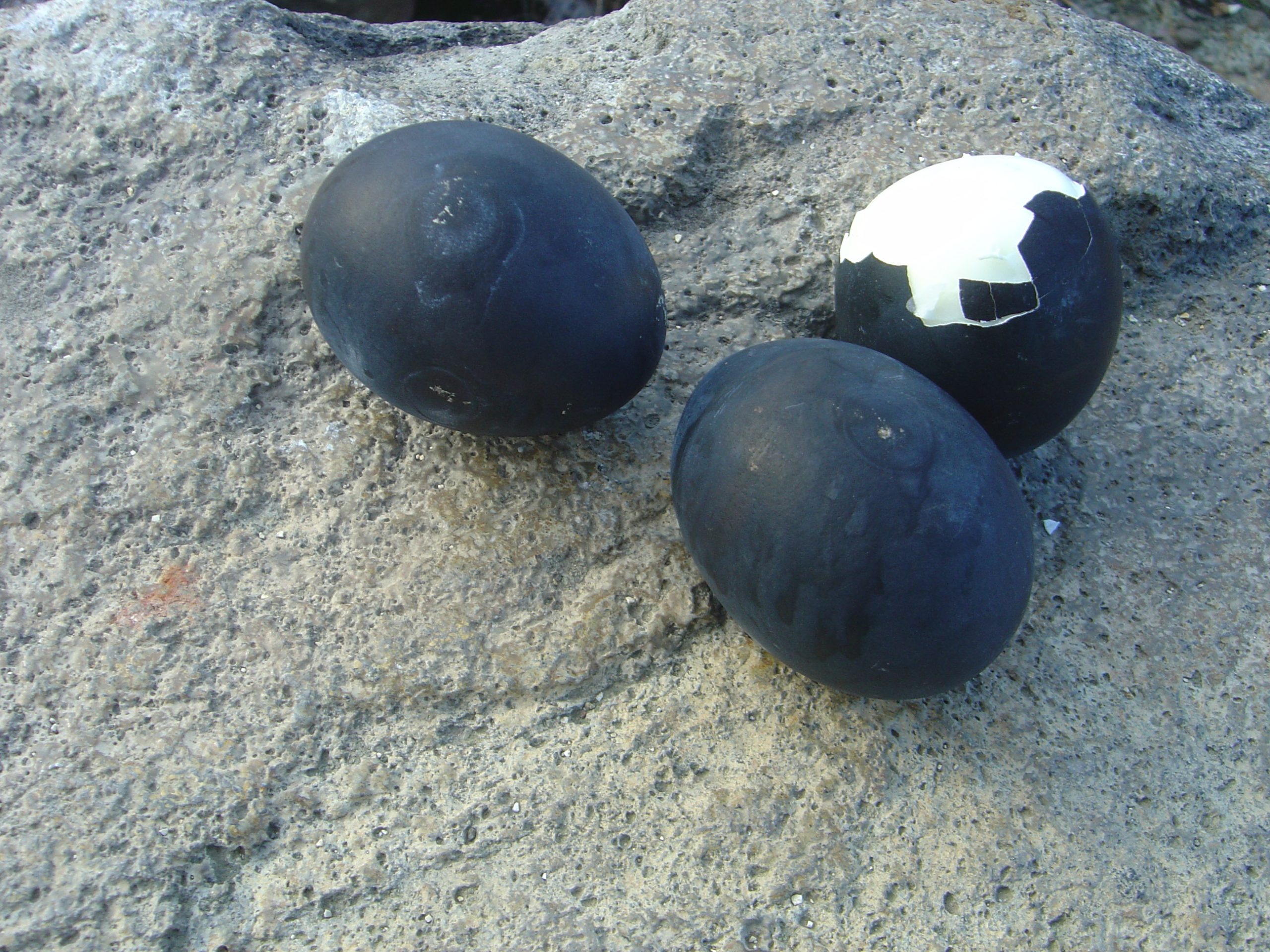
Useful resources for first timers
- When planning your first trip to Japan, make sure to check the dos and don’ts.
- Learn what to pack for Japan to ensure you have the perfect wardrobe for every season.
- When planning your first trip to Japan, consider the best time to visit Japan. Keep in mind that cherry blossom season is a lot busier and more expensive.
- Booking your activities in advance is highly recommended to avoid queuing and ensure availability, especially for popular attractions.
- If you plan to stay longer in Japan, check out our Japan itineraries with details on where to go and how to plan the perfect trip. For this, invest in a JR Pass to save money on JR trains.
- Customs and manners in Japan can be unique, so make sure to familiarize yourself with our Japanese customs and manners book. It contains fun Japanese illustrations and crucial information on how to behave in various scenarios when visiting Japan.
- Should you decide to visit other parts of Japan, make sure to check where to stay in Tokyo, where to stay in Kyoto and where to stay in Osaka. I also have tailored Tokyo itineraries and a lot more information in my complete Japan guide, which is available free of charge to all my readers.
Frequently Asked Questions
Can I do day trip to Hakone from Tokyo?
Yes, Hakone is a popular day trip destination from Tokyo, and it takes less than 90 minutes to reach Hakone from the capital. Hakone is well known for its hot springs and the beautiful views of Mount Fuji it offers. Here’s a guideline on how you should spend a day in Hakone:
Travel to Hakone: The journey from Tokyo to Hakone takes approximately 90 minutes to 2 hours by train. The fastest way to travel to Hakone from Tokyo is by taking the Odakyu Line from Shinjuku Station to Hakone-Yumoto Station.
Explore Hakone: Once in Hakone, visit the Hakone Shrine and take the Hakone Tozan Train and Cable Car up to Owakudani, an active volcanic zone.
Cruise on Lake Ashi: A boat trip across Lake Ashi is a must for the great views of Mt. Fuji on a clear day, and brings you to Moto-Hakone, an area with some nice walking paths.
Onsen Experience: Visit one of the many onsen (hot spring) resorts. Hakone is famous for these. There are many onsens which allow day visitors.
Hakone Open Air Museum: If you appreciate art, visit the Hakone Open Air Museum, which features a large collection of artworks, mostly sculptures, displayed in an outdoor setting.
Return to Tokyo: At the end of the day, you can take a train back to Tokyo from Hakone-Yumoto Station.
Is a day trip to Hakone worth it?
A day trip to Hakone is absolutely worth it. You will have the opportunity to visit the beautiful Hakone Shrine and, if the weather permits, catch a glimpse of Mount Fuji. Take a relaxing cruise on Lake Ashi, surrounded by stunning mountain views.
Explore the volcanic valley of Owakudani with its steam vents and sulphurous fumes, and try the famous “black eggs” boiled in the hot springs, said to extend your lifespan by seven years. Unwind in an onsen and sample delicious Japanese food. Don’t miss the chance to visit the art museums, such as the Hakone Open-Air Museum, and try the foot onsen on-site. Hakone is the perfect destination for a day trip to Tokyo as it offers nature, culture, art, and relaxation.
How much is the bullet train from Tokyo to Hakone?
The bullet train (Shinkansen) from Tokyo to Hakone costs 3800 yen, one way. However, you can get the Romancecar which is 2500 yen one way or ride the Odakyu Line which is included in the price of your Hakone Pass.
How to get to Hakone Ropeway from Tokyo?
To get to Hakone Ropeway from Tokyo, you can follow these steps:
From Tokyo, make your way to Shinjuku Station.
Once you arrive at Shinjuku Station, head to the Odakyu Line platforms. Look for the Odakyu Romancecar Express or the regular Odakyu Limited Express trains bound for Hakone Yumoto Station. These trains provide direct service to Hakone without transfers.
Board the Odakyu train and enjoy the scenic journey to Hakone Yumoto Station. The duration of the train ride is approximately 85-90 minutes.
Upon arrival at Hakone Yumoto Station, exit the station and proceed to the Hakone Tozan Railway platform.
Take the Hakone Tozan Railway train from Hakone Yumoto Station to Gora Station. The ride offers picturesque views as the train winds through the mountains. The duration of this leg is around 40 minutes.
Once you reach Gora Station, you will find the entrance to the Hakone Ropeway nearby. Purchase a ticket for the ropeway, and then board the cable car.
The Hakone Ropeway consists of two sections: the first section takes you to Sounzan Station, and the second section continues to Togendai Station. Enjoy the breathtaking views of the surrounding mountains, Lake Ashi, and, if weather permits, Mount Fuji.

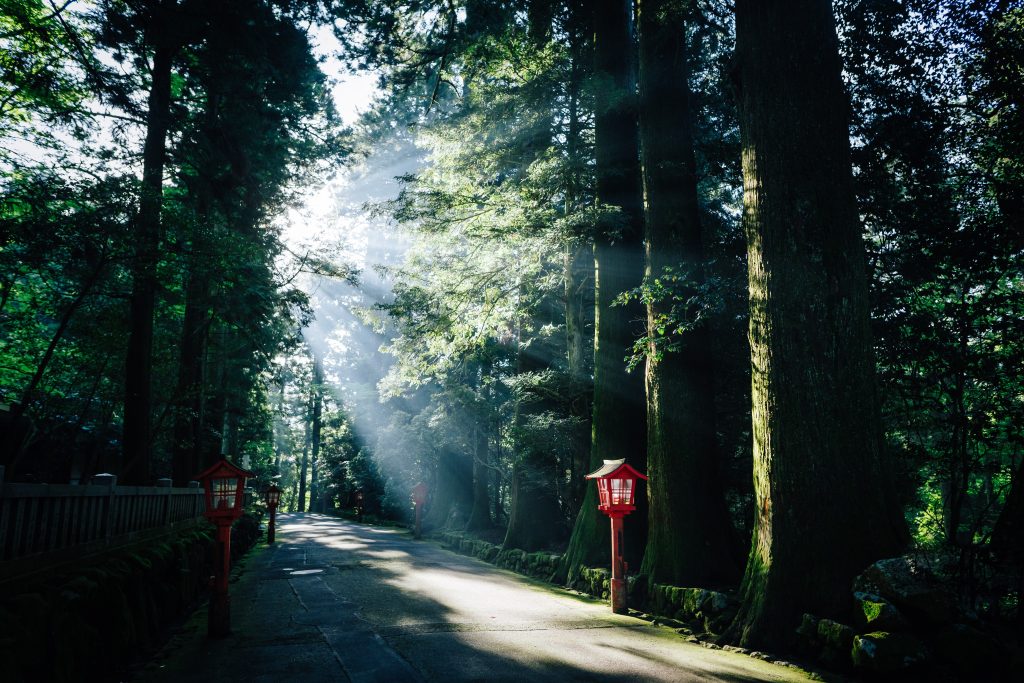
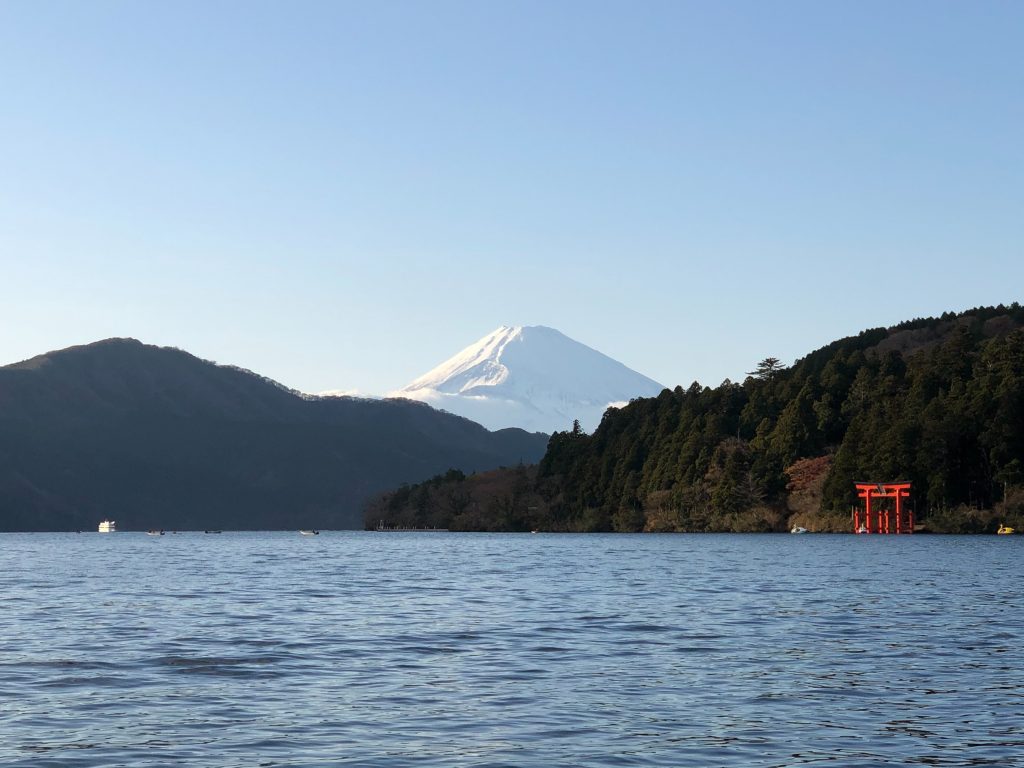
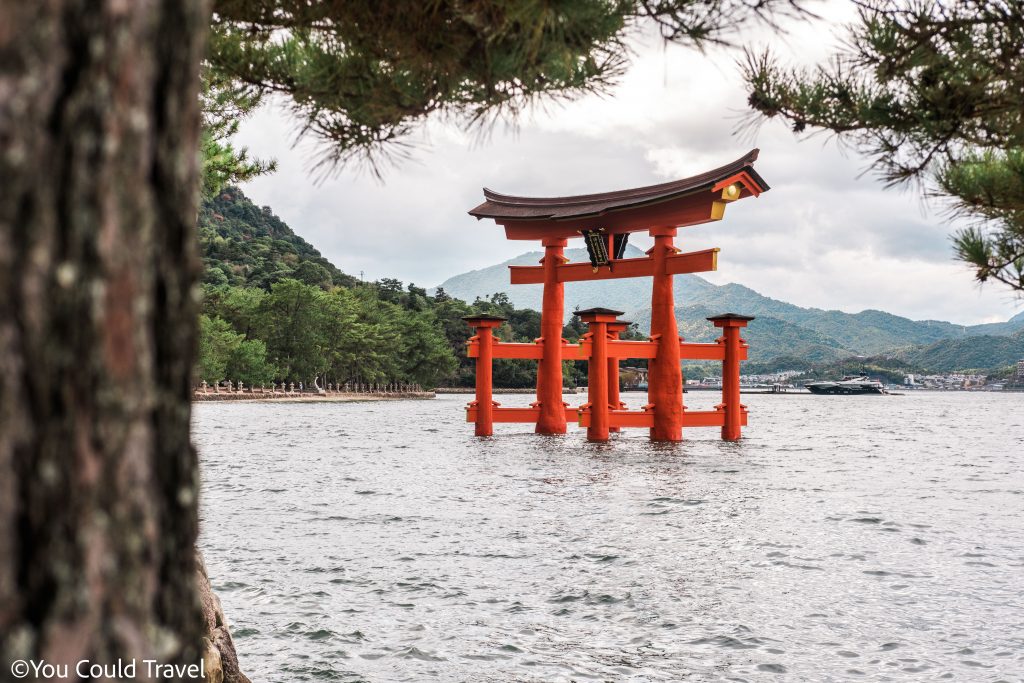
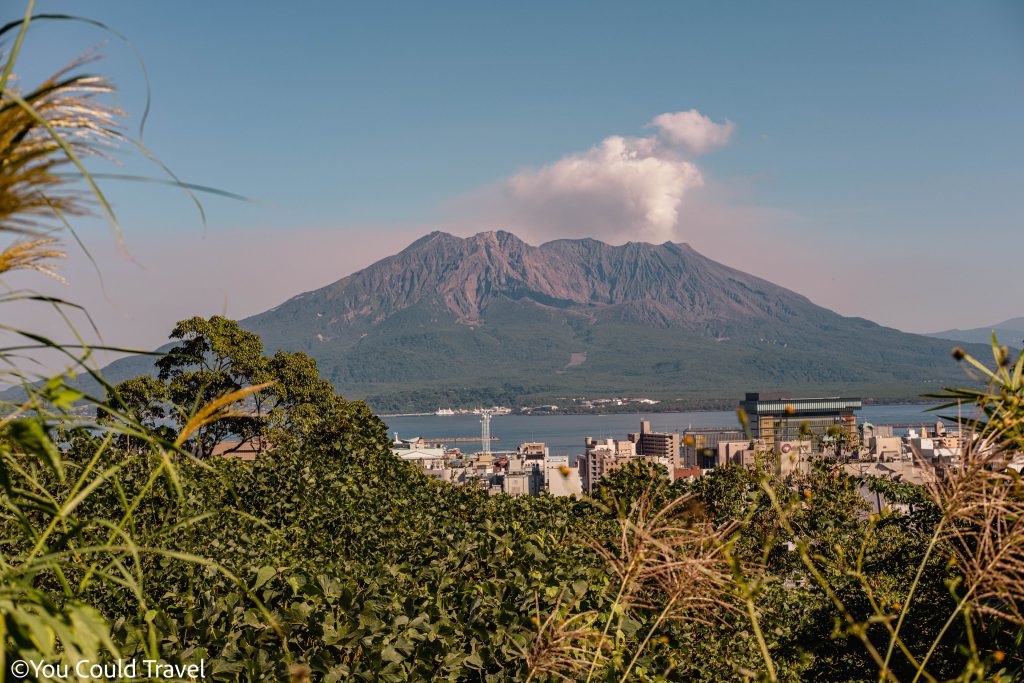
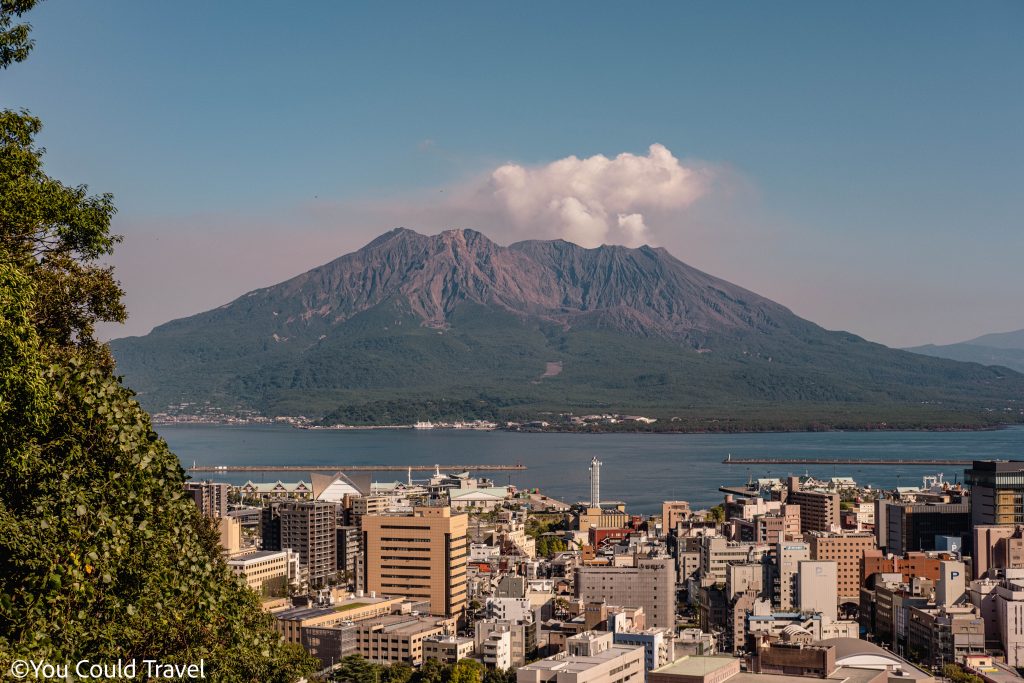
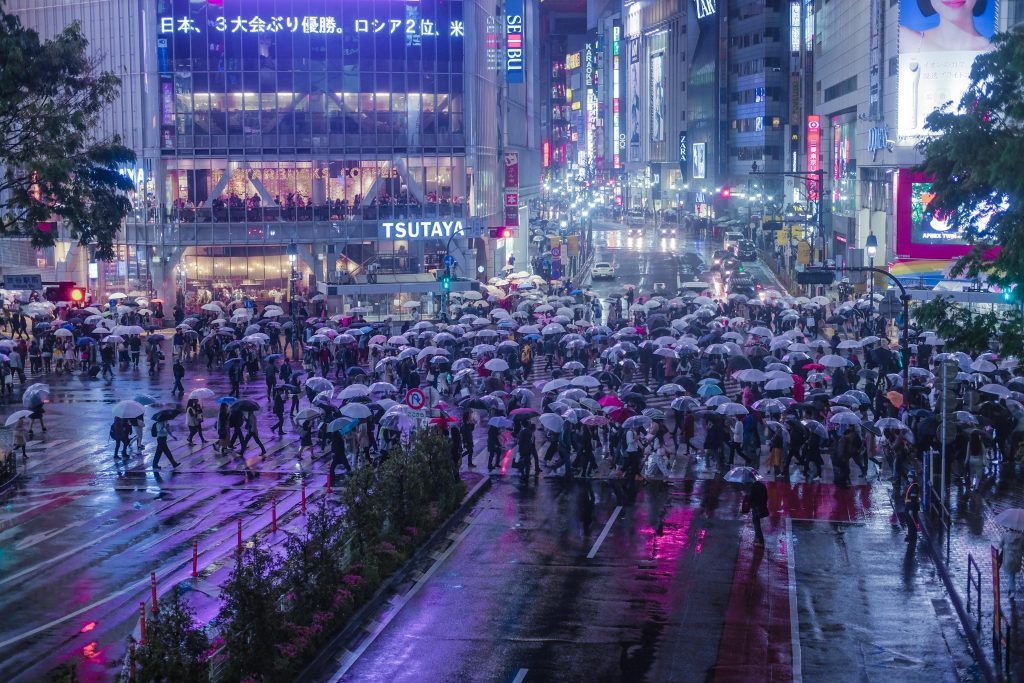


Leave a Reply